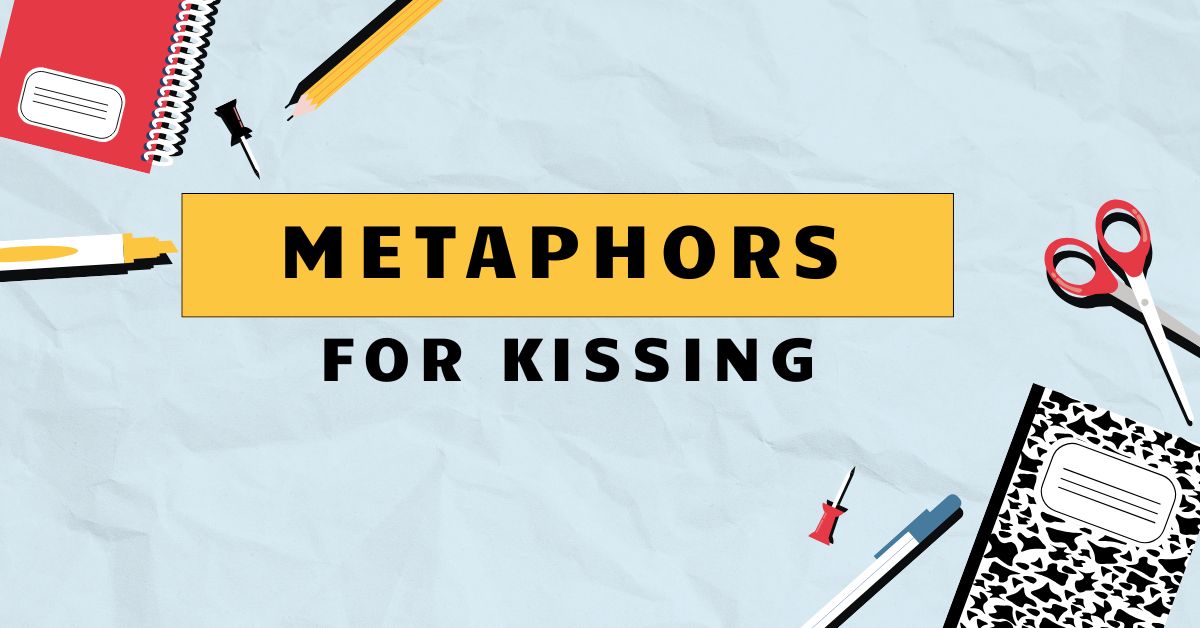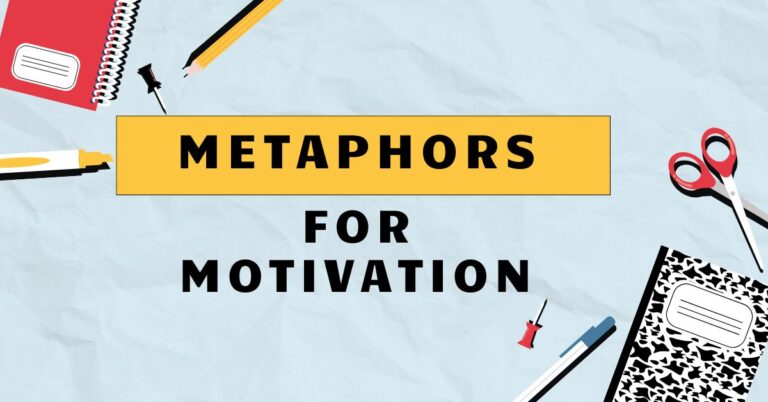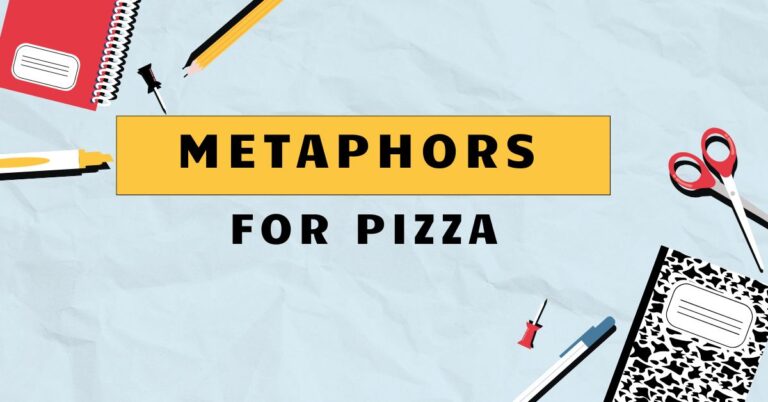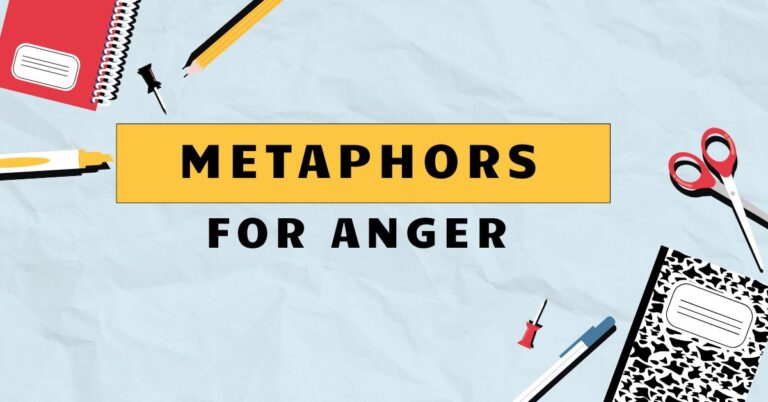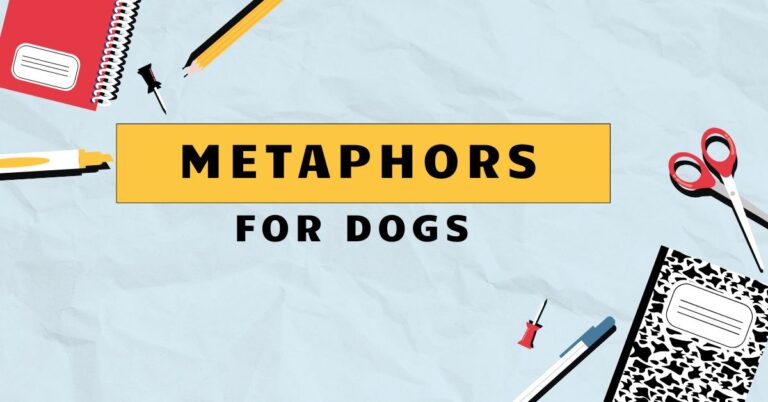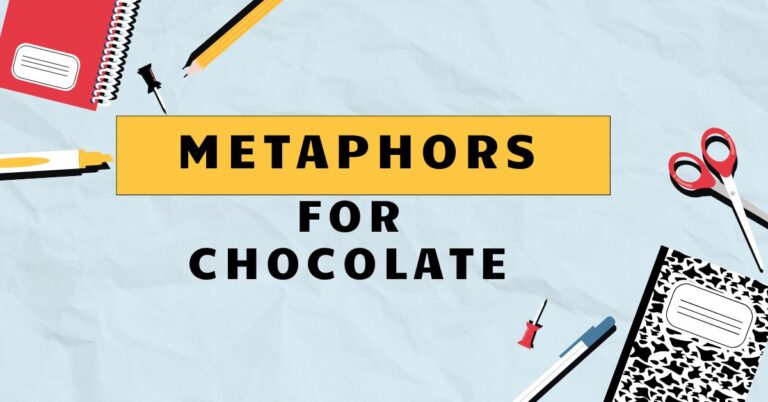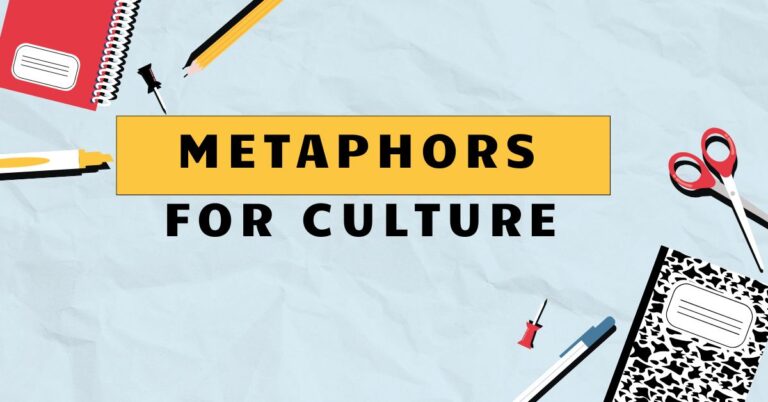41 Metaphors for Kissing: A Comprehensive Guide to Figurative Language
Kissing, a universal expression of affection, often transcends literal description. To capture its nuances, we turn to metaphors, figures of speech that compare one thing to another without using “like” or “as.” Understanding these metaphors enriches our appreciation of language and allows us to express emotions more vividly.
This article delves into the world of kissing metaphors, exploring their structure, usage, and impact on communication. Whether you’re a language enthusiast, a student of English, or simply someone seeking to express affection more eloquently, this guide will provide valuable insights and practical examples.
Table of Contents
- Introduction
- Definition of Metaphor
- Structural Breakdown of Kissing Metaphors
- Types and Categories of Kissing Metaphors
- Examples of Kissing Metaphors
- Usage Rules for Kissing Metaphors
- Common Mistakes with Kissing Metaphors
- Practice Exercises
- Advanced Topics in Metaphorical Language
- Frequently Asked Questions
- Conclusion
Definition of Metaphor
A metaphor is a figure of speech that directly compares two unrelated things, asserting that one thing *is* another. Unlike similes, which use “like” or “as” to make a comparison, metaphors imply a resemblance between the two subjects.
Metaphors are powerful tools for conveying complex emotions and ideas in a concise and evocative manner. They work by transferring qualities from one concept to another, creating a new understanding or perspective.
In the context of kissing, metaphors allow us to describe the experience in terms beyond the literal act of touching lips. They tap into our senses, emotions, and experiences to create richer and more meaningful descriptions.
For example, instead of simply saying “the kiss was passionate,” a metaphor might describe it as “a wildfire consuming everything in its path.” This paints a more vivid picture and conveys the intensity of the emotion.
Structural Breakdown of Kissing Metaphors
Understanding the structure of a metaphor involves identifying thetenorand thevehicle. The tenor is the subject being described (in this case, the kiss), and the vehicle is the object or concept used to describe it.
The connection between the tenor and the vehicle is the shared characteristic or quality that makes the metaphor effective.
For example, in the metaphor “the kiss was a spark,” the tenor is the kiss, and the vehicle is a spark. The shared characteristic is the suddenness, intensity, and potential for ignition (of passion or emotion).
Effective metaphors rely on this shared characteristic to create a meaningful comparison. Also consider theground, the aspects of the vehicle that apply to the tenor.
In our example, the ground includes the suddenness and heat of the spark, but likely not its small size or transience.
Types and Categories of Kissing Metaphors
Kissing metaphors can be categorized based on the type of imagery they evoke. Here are some common categories:
Sensory Metaphors
Sensory metaphors appeal to the five senses: sight, sound, smell, taste, and touch. They describe the kiss in terms of sensory experiences.
Nature Metaphors
Nature metaphors draw comparisons between the kiss and elements of the natural world, such as weather, landscapes, or animals.
Abstract Metaphors
Abstract metaphors use abstract concepts like time, emotion, or energy to describe the kiss.
Action Metaphors
Action metaphors describe the kiss as a dynamic event or action, emphasizing its movement and impact.
Food Metaphors
Food metaphors compare the kiss to different types of food, often emphasizing its sweetness, flavor, or texture.
Examples of Kissing Metaphors
The following tables provide examples of kissing metaphors categorized by type. Each example illustrates how a different vehicle can be used to describe the tenor (the kiss), creating a unique and evocative image.
Table 1: Sensory Metaphors for Kissing
This table showcases metaphors that evoke sensory experiences to describe a kiss. Notice how each metaphor appeals to a different sense, creating a vivid and immersive image.
| Metaphor | Sense | Explanation |
|---|---|---|
| The kiss was a symphony of sensations. | Multiple | Suggests a harmonious blend of different feelings. |
| Her kiss was velvet. | Touch | Implies a soft, smooth, and luxurious sensation. |
| His kiss tasted like sunshine. | Taste | Evokes a feeling of warmth, happiness, and brightness. |
| The kiss was a silent explosion. | Sound/Touch | Contradictory metaphor suggesting intense, overwhelming feelings. |
| Her kiss was a whisper against my skin. | Touch/Sound | Suggests a gentle, intimate, and barely perceptible touch. |
| The kiss painted colors across my vision. | Sight | Implies a vibrant and emotionally charged experience. |
| The kiss was a warm blanket on a cold night. | Touch | Conveys comfort, security, and affection. |
| Their kiss smelled like coming home. | Smell | Evokes feelings of familiarity, comfort, and belonging. |
| The kiss felt like floating on a cloud. | Touch | Implies a sense of lightness, freedom, and bliss. |
| The kiss echoed in the silence. | Sound | Suggests a lingering, impactful, and memorable moment. |
| Her kiss was a jolt of electricity. | Touch | Implies a sudden, shocking, and exciting sensation. |
| The kiss left a burning imprint on my lips. | Touch | Conveys intensity, passion, and lasting impact. |
| His kiss was a soothing balm. | Touch | Implies comfort, healing, and relief. |
| The kiss was a blinding flash of light. | Sight | Suggests sudden, overwhelming emotion and revelation. |
| Her kiss felt like sinking into quicksand. | Touch | Implies being overwhelmed, helpless, and consumed. |
| The kiss was a rush of adrenaline. | Touch | Conveys excitement, energy, and heightened senses. |
| His kiss tasted like dark chocolate. | Taste | Implies richness, indulgence, and complexity. |
| The kiss was a gentle rain on parched earth. | Touch | Suggests relief, replenishment, and satisfaction. |
| Her kiss felt like a spider crawling on my skin. | Touch | Implies revulsion, fear, and discomfort. |
| His kiss smelled like a rose garden in full bloom. | Smell | Conveys beauty, romance, and freshness. |
| The kiss was a sharp slap to the face. | Touch | Implies shock, anger, and betrayal. |
| Her kiss was a cool breeze on a summer day. | Touch | Suggests refreshment, relief, and comfort. |
| His kiss tasted like burnt sugar. | Taste | Implies sweetness tinged with bitterness or disappointment. |
| The kiss was a deafening roar. | Sound | Conveys overwhelming intensity and impact. |
Table 2: Nature Metaphors for Kissing
This table presents metaphors that use elements of nature to describe a kiss. Notice how the natural world provides rich imagery to convey different emotions and experiences associated with kissing.
| Metaphor | Element of Nature | Explanation |
|---|---|---|
| The kiss was a gentle breeze. | Wind | Suggests a light, airy, and refreshing touch. |
| Their kiss was a thunderstorm. | Weather | Implies a powerful, intense, and possibly destructive force. |
| The kiss was a blossoming flower. | Flora | Evokes feelings of beauty, growth, and unfolding emotions. |
| Her kiss was a rising tide. | Water | Suggests a gradual, overwhelming, and unstoppable force. |
| The kiss was a desert oasis. | Landscape | Implies relief, refreshment, and a source of life in a barren situation. |
| The kiss was a mountain peak. | Landscape | Implies achievement, exhilaration, and a sense of being on top of the world. |
| The kiss was a babbling brook. | Water | Conveys playfulness, lightheartedness, and gentle movement. |
| Their kiss was a volcanic eruption. | Geology | Implies a sudden, explosive, and uncontrollable release of emotion. |
| The kiss was a field of wildflowers. | Flora | Evokes beauty, diversity, and a sense of natural abundance. |
| Her kiss was a gentle snowfall. | Weather | Suggests peace, tranquility, and a soft, delicate touch. |
| The kiss was a roaring waterfall. | Water | Implies power, intensity, and an overwhelming force. |
| Their kiss was a forest fire. | Nature | Conveys destruction, passion, and uncontrollable spread. |
| The kiss was a sun-drenched meadow. | Landscape | Evokes warmth, happiness, and a sense of freedom. |
| Her kiss was a starless night. | Astronomy | Suggests mystery, darkness, and the unknown. |
| The kiss was a placid lake. | Water | Implies calmness, serenity, and depth. |
| Their kiss was a hurricane. | Weather | Conveys chaos, destruction, and overwhelming force. |
| The kiss was a budding rose. | Flora | Evokes potential, beauty, and the promise of something more. |
| Her kiss was a lunar eclipse. | Astronomy | Suggests rarity, mystery, and a temporary obscuring of light. |
| The kiss was a flowing river. | Water | Implies continuity, movement, and a journey. |
| Their kiss was a swarm of bees. | Fauna | Conveys chaotic energy, intensity, and a stinging sensation. |
| The kiss was a barren wasteland. | Landscape | Implies emptiness, desolation, and a lack of emotion. |
| Her kiss was a morning dew. | Weather | Suggests freshness, purity, and a new beginning. |
| The kiss was a raging sea. | Water | Conveys turbulence, power, and overwhelming emotion. |
| Their kiss was a flock of doves. | Fauna | Conveys peace, gentleness, and a sense of calm. |
Table 3: Abstract and Action Metaphors for Kissing
This table combines abstract and action metaphors, showcasing how intangible concepts and dynamic movements can describe a kiss. These metaphors often convey deeper meanings and emotional resonance.
| Metaphor | Type | Explanation |
|---|---|---|
| The kiss was a stolen moment. | Abstract | Suggests secrecy, excitement, and a sense of transgression. |
| Their kiss was a battle. | Action | Implies conflict, struggle, and a power dynamic. |
| The kiss was a question. | Abstract | Evokes uncertainty, curiosity, and a search for answers. |
| Her kiss was a dance. | Action | Suggests rhythm, coordination, and a shared experience. |
| The kiss was a silent promise. | Abstract | Implies commitment, trust, and unspoken expectations. |
| Their kiss was a freefall. | Action | Conveys recklessness, vulnerability, and a loss of control. |
| The kiss was a shared secret. | Abstract | Evokes intimacy, trust, and a bond between two people. |
| Her kiss was a gentle exploration. | Action | Suggests curiosity, discovery, and a tentative approach. |
| The kiss was a declaration of war. | Abstract | Implies conflict, aggression, and a challenge. |
| Their kiss was a desperate plea. | Action | Conveys longing, need, and a sense of urgency. |
| The kiss was a forgotten dream. | Abstract | Evokes nostalgia, longing, and a sense of loss. |
| Her kiss was a slow burn. | Action | Suggests gradual intensity, building desire, and lasting impact. |
| The kiss was a moment of truth. | Abstract | Implies honesty, revelation, and a significant turning point. |
| Their kiss was a reckless plunge. | Action | Conveys impulsiveness, risk-taking, and a lack of caution. |
| The kiss was a fragile hope. | Abstract | Evokes vulnerability, uncertainty, and a delicate emotion. |
| Her kiss was a tender embrace. | Action | Suggests comfort, security, and affection. |
| The kiss was a dangerous game. | Abstract | Implies risk, excitement, and potential consequences. |
| Their kiss was a forceful claim. | Action | Conveys dominance, possession, and assertion. |
| The kiss was a haunting memory. | Abstract | Evokes lingering feelings, nostalgia, and a powerful impact. |
| Her kiss was a careful negotiation. | Action | Suggests diplomacy, compromise, and a delicate balance. |
| The kiss was a sweet surrender. | Abstract | Implies yielding, acceptance, and a loss of control. |
| Their kiss was a violent collision. | Action | Conveys shock, impact, and a forceful encounter. |
| The kiss was a whispered prayer. | Abstract | Evokes longing, hope, and a sense of reverence. |
| Her kiss was a silent scream. | Action | Suggests suppressed emotion, inner turmoil, and a desperate need. |
Table 4: Food Metaphors for Kissing
This table explores food metaphors used to describe kissing. Food metaphors often focus on the taste, texture, and overall experience of a kiss, creating a sensual and evocative image.
| Metaphor | Type of Food | Explanation |
|---|---|---|
| The kiss was a sugary treat. | Sweets | Suggests sweetness, indulgence, and a delightful experience. |
| Their kiss was a bitter pill. | Medicine | Implies unpleasantness, regret, and a difficult experience. |
| The kiss was a ripe fruit. | Fruit | Evokes freshness, ripeness, and a sense of fulfillment. |
| Her kiss was a spicy chili. | Spice | Suggests intensity, excitement, and a fiery passion. |
| The kiss was a creamy dessert. | Dessert | Implies richness, smoothness, and a luxurious experience. |
| Their kiss was a stale bread. | Bread | Conveys lack of excitement, boredom, and a sense of being unfulfilling. |
| The kiss was a tart lemon. | Fruit | Implies sourness, sharpness, and a slightly unpleasant experience. |
| Her kiss was a strong coffee. | Beverage | Suggests energy, alertness, and a stimulating experience. |
| The kiss was a hearty meal. | Meal | Implies satisfaction, fulfillment, and a sense of nourishment. |
| Their kiss was a bland soup. | Soup | Conveys lack of flavor, excitement, and a sense of being uninspired. |
| The kiss was a sweet honey. | Sweetener | Suggests pure sweetness, gentleness, and a soothing experience. |
| Her kiss was a salty caramel. | Dessert | Suggests a combination of sweetness and a sharp, edgy twist. |
| The kiss was a decadent chocolate. | Dessert | Implies richness, indulgence, and a luxurious experience. |
| Their kiss was a dry cracker. | Snack | Conveys lack of moisture, dryness, and a sense of being unappealing. |
| The kiss was a juicy peach. | Fruit | Suggests sweetness, ripeness, and a delightful experience. |
| Her kiss was a fiery salsa. | Sauce | Suggests intensity, excitement, and a passionate experience. |
| The kiss was a comforting stew. | Meal | Implies warmth, security, and a sense of nourishment. |
| Their kiss was a watered-down wine. | Beverage | Conveys a lack of strength, diluted passion, and a disappointing experience. |
| The kiss was a crisp apple. | Fruit | Suggests freshness, vitality, and a refreshing experience. |
| Her kiss was a melted ice cream. | Dessert | Suggests a sweet start that became a sloppy mess. |
| The kiss was a forgotten pizza. | Meal | Implies a past warmth that has become cold and unappetizing. |
| Her kiss was a burnt toast. | Bread | Suggests a promising start that was ruined by carelessness. |
| The kiss was a ripe mango. | Fruit | Suggests exotic sweetness and a tropical sensation. |
| Their kiss was a spoiled milk. | Beverage | Conveys something that was once pure but has turned sour. |
Usage Rules for Kissing Metaphors
When using metaphors, consider the following rules to ensure clarity and effectiveness:
- Relevance: The vehicle should have a clear and understandable connection to the tenor (the kiss).
- Originality: Strive for fresh and imaginative metaphors that avoid clichés.
- Consistency: Maintain a consistent tone and imagery throughout the description.
- Context: Consider the context and audience when choosing a metaphor.
- Clarity: Ensure that the metaphor enhances understanding rather than creating confusion.
A strong metaphor resonates with the reader because it is apt and fitting. An ineffective metaphor will fall flat and can even detract from your message.
Remember to use metaphors sparingly to maximize their impact.
Common Mistakes with Kissing Metaphors
Here are some common mistakes to avoid when using kissing metaphors:
- Mixed Metaphors: Combining unrelated metaphors that create a confusing or contradictory image.
- Clichés: Using overused metaphors that have lost their impact.
- Inappropriate Metaphors: Choosing metaphors that are offensive or insensitive to the audience.
- Unclear Connections: Failing to establish a clear connection between the tenor and the vehicle.
Table 5: Correct vs. Incorrect Examples
This table shows common mistakes made when using kissing metaphors. It highlights how mixed metaphors, clichés, and inappropriate comparisons can detract from the intended meaning.
| Incorrect | Correct | Explanation |
|---|---|---|
| The kiss was a rollercoaster of emotions, but also a walk in the park. | The kiss was a rollercoaster of emotions. | Avoid mixing unrelated metaphors. |
| The kiss was like fireworks. | The kiss was a sky ablaze with stars. | Avoid clichés; strive for originality. |
| The kiss was a nuclear explosion. | The kiss was a sudden spark. | Ensure the metaphor is appropriate for the context. |
| The kiss was a table. | The kiss was a sturdy foundation. | Establish a clear connection between the tenor and the vehicle. |
| Her kiss tasted like rainbows. | Her kiss tasted like sweet nectar. | Ensure the metaphor connects to a tangible sensation. |
| The kiss was a raging inferno, but also a gentle breeze. | The kiss was a raging inferno. | Avoid contradictory imagery. |
| Their kiss was like a million butterflies. | Their kiss was a swarm of frantic bees. | Avoid overused comparisons. |
| The kiss was a train wreck. | The kiss was a dangerous gamble. | Use metaphors that are sensitive and appropriate. |
| The kiss was a refrigerator. | The kiss was a welcome warmth. | Make sure the comparison is logical and meaningful. |
| Her kiss felt like a unicorn. | Her kiss felt like a soft caress. | Choose metaphors that create a clear image. |
Practice Exercises
Test your understanding of kissing metaphors with these exercises. Identify the type of metaphor used in each sentence and, if necessary, rewrite the sentence to improve the metaphor.
Exercise 1: Identifying Metaphor Types
Identify the type of metaphor used in each sentence (Sensory, Nature, Abstract, Action, Food).
- The kiss was a stolen glance.
- Her kiss tasted like wild honey.
- The kiss was a roaring ocean.
- Their kiss was a slow dance.
- The kiss was a fragile promise.
- Her kiss was velvet soft.
- The kiss was a summer storm.
- Their kiss was a shared secret.
- The kiss was a spicy pepper.
- Her kiss was a gentle exploration.
Exercise 2: Rewriting Metaphors
Rewrite the following sentences to improve the metaphor or make it more original.
- The kiss was like a rose.
- Their kiss was as hot as fire.
- The kiss was a walk in the park.
- Her kiss was like a dream.
- The kiss was as sweet as sugar.
- Their kiss was as cold as ice.
- The kiss was like a drug.
- Her kiss was like a fairytale.
- The kiss was like a volcano erupting.
- Their kiss was like a gentle breeze.
Table 6: Answer Key for Exercise 1
This table provides the answers to Exercise 1, identifying the type of metaphor used in each sentence.
| Question | Answer |
|---|---|
| 1. The kiss was a stolen glance. | Abstract |
| 2. Her kiss tasted like wild honey. | Food |
| 3. The kiss was a roaring ocean. | Nature |
| 4. Their kiss was a slow dance. | Action |
| 5. The kiss was a fragile promise. | Abstract |
| 6. Her kiss was velvet soft. | Sensory |
| 7. The kiss was a summer storm. | Nature |
| 8. Their kiss was a shared secret. | Abstract |
| 9. The kiss was a spicy pepper. | Food |
| 10. Her kiss was a gentle exploration. | Action |
Table 7: Answer Key for Exercise 2 (Sample Answers)
This table provides sample answers to Exercise 2, offering suggestions on how to improve the metaphors in the given sentences.
| Question | Sample Answer |
|---|---|
| 1. The kiss was like a rose. | The kiss was a blossoming garden, unfolding with each touch. |
| 2. Their kiss was as hot as fire. | Their kiss was a searing flame, consuming everything in its path. |
| 3. The kiss was a walk in the park. | The kiss was a gentle stroll through a moonlit garden. |
| 4. Her kiss was like a dream. | Her kiss was a surreal landscape, painted with vibrant emotions. |
| 5. The kiss was as sweet as sugar. | The kiss was a cascade of liquid gold, coating my senses. |
| 6. Their kiss was as cold as ice. | Their kiss was a glacial touch, freezing my heart in its place. |
| 7. The kiss was like a drug. | The kiss was an intoxicating elixir, coursing through my veins. |
| 8. Her kiss was like a fairytale. | Her kiss was a magical spell, transporting me to another world. |
| 9. The kiss was like a volcano erupting. | The kiss was an explosive eruption of pent-up desire. |
| 10. Their kiss was like a gentle breeze. | Their kiss was a soft whisper of wind, caressing my skin. |
Advanced Topics in Metaphorical Language
For advanced learners, consider exploring these topics:
- Extended Metaphors: Developing a single metaphor over a longer passage.
- Mixed Metaphors: The deliberate use of mixed metaphors for humorous or stylistic effect.
- Conceptual Metaphors: Understanding how metaphors shape our thinking and perception of the world.
- Historical Context of Metaphors: Tracing the evolution and cultural significance of specific metaphors.
Delving into these advanced topics will deepen your understanding of metaphorical language and its impact on communication and thought.
Frequently Asked Questions
- What is the difference between a metaphor and a simile?
A metaphor directly equates one thing to another, while a simile uses “like” or “as” to make a comparison. For example, “The kiss was fire” (metaphor) vs. “The kiss was like fire” (simile).
- How can I create more original metaphors?
Think beyond common comparisons and explore unexpected connections between the tenor and the vehicle. Consider sensory details, personal experiences, and unique perspectives.
- Why are metaphors important in writing?
Metaphors add depth, emotion, and imagery to writing, making it more engaging and memorable. They can also convey complex ideas in a concise and accessible way.
- Can a metaphor be too complex?
Yes, if the connection between the tenor and the vehicle is too obscure or requires specialized knowledge, the metaphor may be confusing or ineffective. Aim for clarity and relevance.
- How do I avoid using clichés in my metaphors?
Be mindful of overused comparisons and strive for originality. Explore different perspectives and sensory details to create fresh and imaginative metaphors.
- What is a mixed metaphor, and why is it usually considered a mistake?
A mixed metaphor combines unrelated metaphors, creating a confusing or contradictory image. It is generally considered a mistake because it undermines clarity and coherence.
- Are metaphors culturally specific?
Yes, metaphors often draw on cultural references and experiences, which may not be universally understood. Consider your audience when choosing metaphors.
- How can I practice using metaphors more effectively?
Read widely, pay attention to the metaphors used by other writers, and experiment with different comparisons in your own writing. Seek feedback from others to refine your skills.
- Is it okay to use multiple metaphors to describe a single kiss?
Yes, but use them judiciously. Too many metaphors can overwhelm the reader. Choose a few that work well together to create a cohesive and impactful image.
- How do metaphors affect the tone of a piece of writing?
Metaphors can significantly impact the tone. A metaphor comparing a kiss to a gentle breeze creates a calm and peaceful tone, while a metaphor comparing it to a thunderstorm creates a more intense and dramatic tone.
- Can metaphors be used in everyday conversation, or are they just for writing?
Metaphors are commonly used in everyday conversation to add color and expressiveness to our speech. They help us communicate complex ideas and emotions in a relatable way.
Conclusion
Metaphors for kissing offer a powerful way to express the nuances and emotions associated with this intimate act. By understanding the structure, types, and usage rules of these metaphors, you can enhance your writing and communication skills.
Remember to strive for originality, relevance, and clarity when crafting your own metaphors. Avoid common mistakes like mixed metaphors and clichés to ensure that your descriptions are both evocative and effective.
Practice identifying and creating metaphors to develop your skills and expand your vocabulary. Pay attention to the metaphors used by others and experiment with different comparisons to find your own unique voice.
With dedication and practice, you can master the art of using metaphors to create vivid and memorable descriptions of kissing and other experiences. Embrace the power of figurative language to enrich your communication and connect with others on a deeper level.

